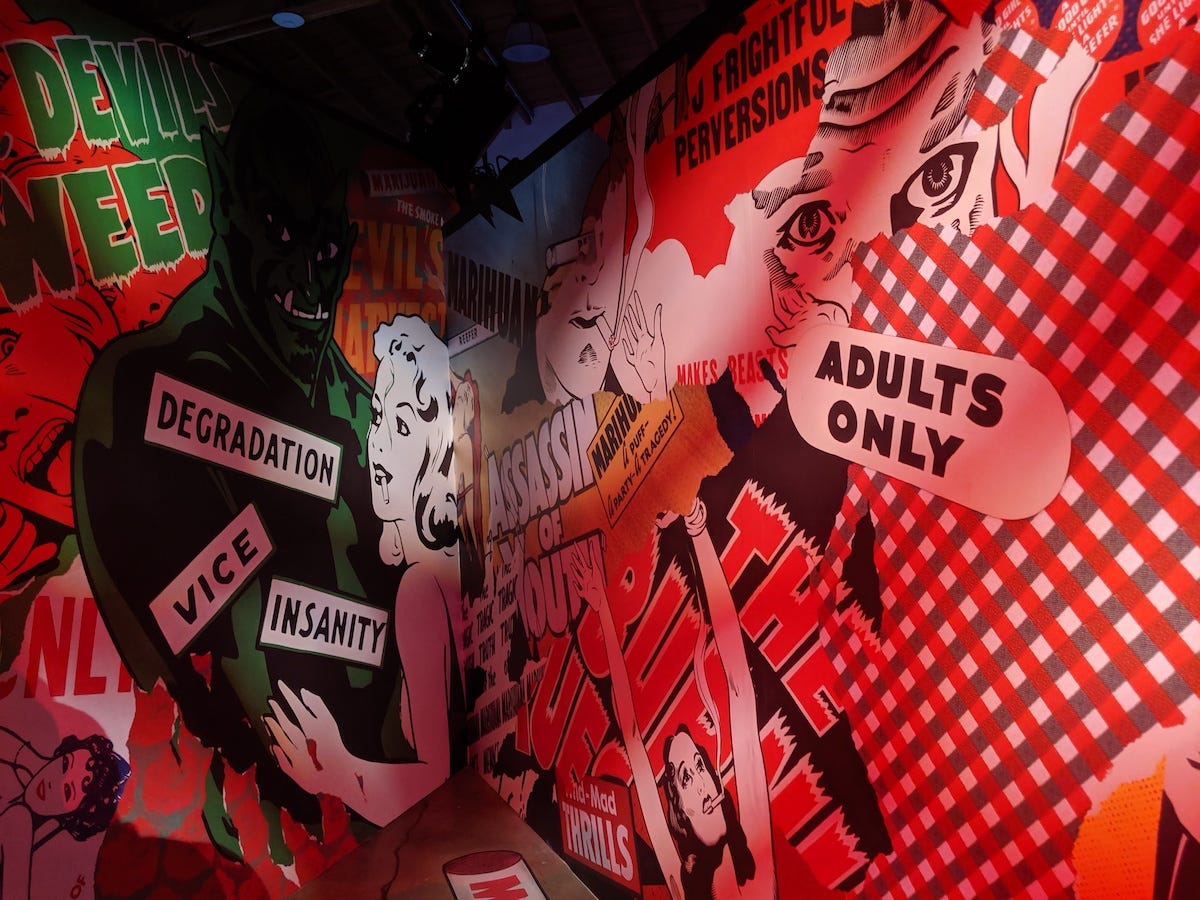
When cannabis platform Weedmaps announced they’d be opening a Museum of Weed in L.A. this summer, I had to wonder if it would be a museum or a “museum.” Would we learn stuff, or would it just be a series of rooms to take photos of ourselves in? I was pleasantly surprised to see that it’s actually both. It weaves through the long history of cannabis, from ancient uses through the War on Drugs to the present. And yes, you can take some trippy selfies.
Here’s where I need to offer a disclosure: as a former freelance journalist, I’ve written about cannabis for numerous weed publications, including two pieces for Weedmaps. That fact does not influence my opinion of their Museum of Weed in any way, but my experience with cannabis-related content does inform my opinion.
For one, I wrote a piece last year about Las Vegas’s Cannabition for High Times. Cannabition was a similar concept, but far more Instagram-leaning with its World’s Tallest Bong and branded art installations. For two, I find a lot of cannabis stuff truly exhausting at this point. I don’t want to go to a luxury weed lifestyle event where they match your star sign to your preferred strain and offer samples of cold-pressed CBD face serums while other Americans sit behind bars over the same plant. If we’re going to immerse ourselves in weed, we need to immerse ourselves in the United States’ long, complicated, often racist history with it. And that, fortunately, is what Weedmaps has done. The 7-part exhibit walks guests through cannabis prohibition, prosecution, and legalization without ignoring the issues that persist today. And, at the end, it offers a fun way to explore what the things your friendly neighborhood budtender is always saying actually mean, making you a more informed cannabis consumer—if, of course, that’s what you’re into.
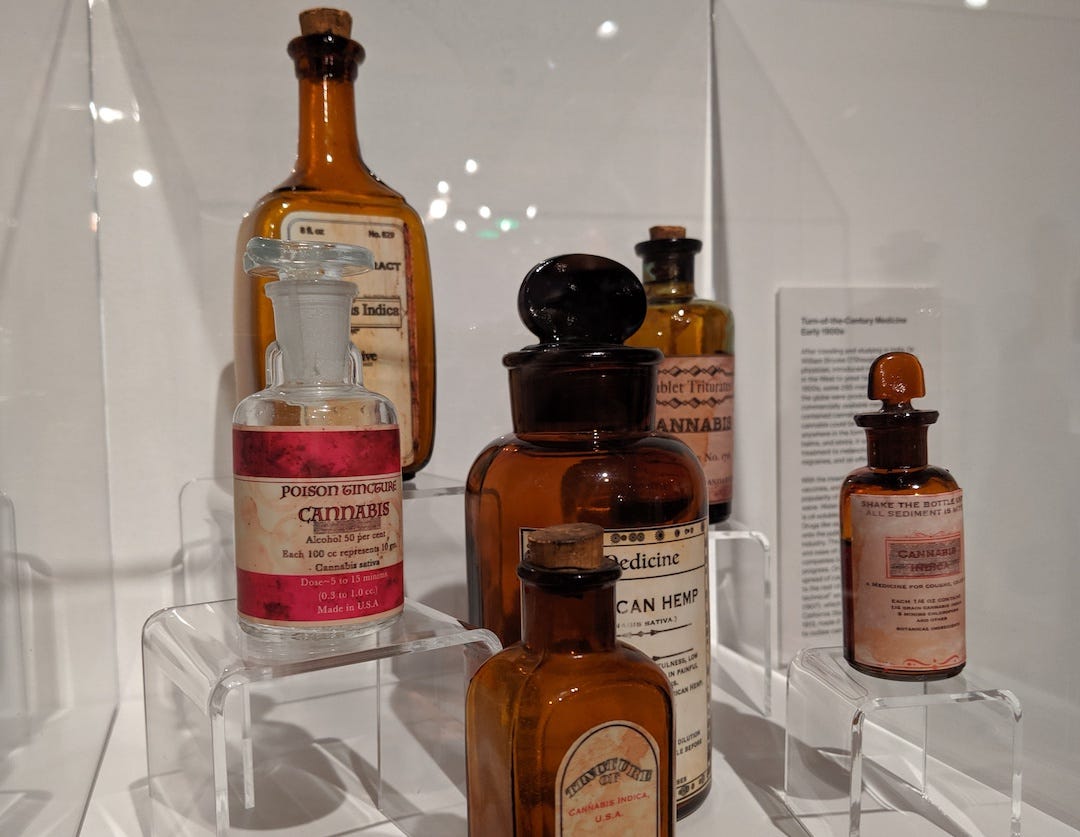
So, about the Museum of Weed. Guests will enter near Melrose and Cahuenga to find a lot of wide, open, industrial space that includes a gift shop, coffee shop, and cafe. The museum portion is accessible via a short hallway.
The story of cannabis in the U.S. is described at the onset of guests’ journey as one of “highs and lows.” Guests begin at something of a neutral point, when cannabis was simply yet another useful plant. Paintings and old texts show cannabis being used both medicinally and recreationally in ancient China, India, Egypt, and other regions. Hemp was also commonly used to make clothing and other fiber goods in Japan, the U.S., and elsewhere.
So, what changed? I guess the better question might be, what hasn’t?
The museum will tell you that between 1910 and 1920, Mexican immigrants began moving north into the United States as a result of the Mexican revolution. Those who did not want them in the U.S. began their campaign of fearmongering, attempting to associate immigrants with drugs and bad behavior, not unlike a certain president calling modern immigrants from Mexico “bad hombres.” These fearmongering dingdongs wove grand tales about a dangerous plant that drove people mad and they called it “marihuana.” (You can read more about all that here and the push to stop using the word marijuana and start using cannabis instead here.)
The rest of the museum proceeds chronologically, so next up was the Age of Madness, a reference to Reefer Madness, a 1936 propaganda film that depicts the effects of a single toke as disastrous. One hit and its characters turn into sex-craved, violent fiends straight out of a Baptist hell house on Halloween. The film enjoys cult status today for being absurd and hilarious, but at the time, people really did think stuff like that.
In the Museum of Weed, the imagery associated with Reefer Madness and similar anti-drug propaganda films of the era has been crafted into a winding hallway with funhouse mirrors and film posters. You can even catch a selection of the film as it's projected against a wall.
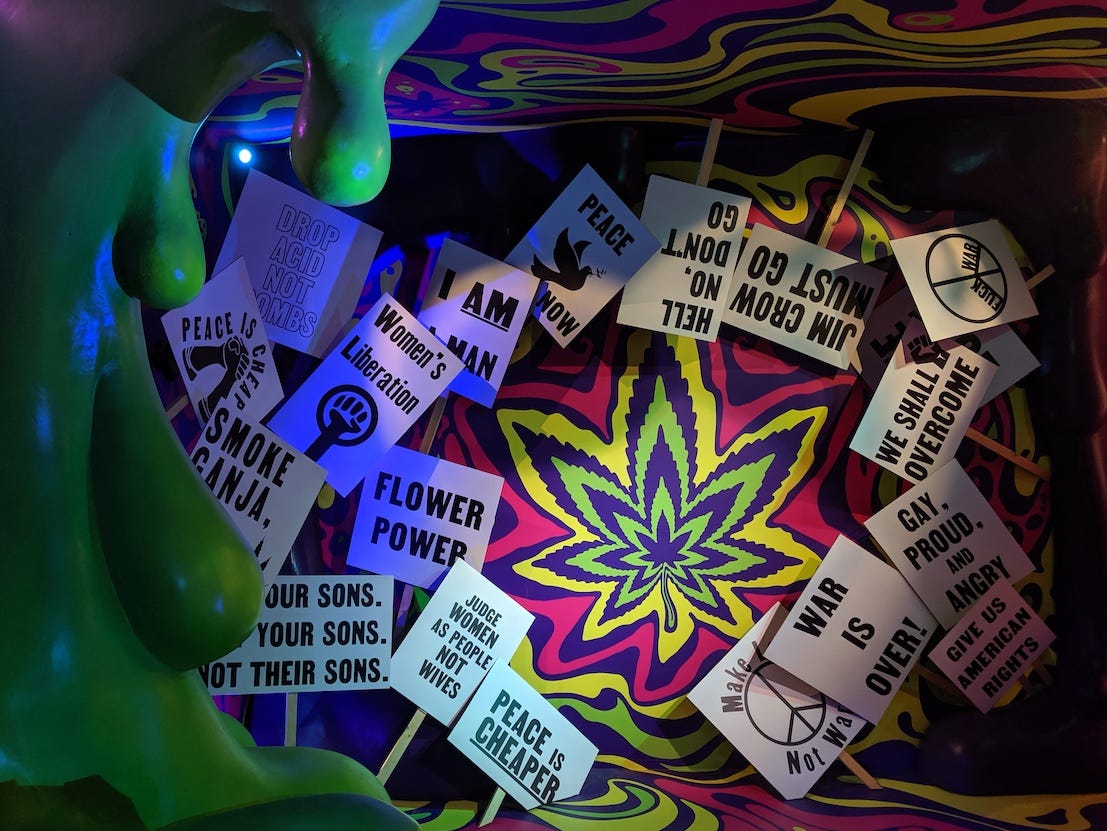
Next comes the counterculture movement of the ‘60s. Guests walk through a VW van and wind through a trippy hallway where they will learn about protests and psychedelic art and experimentation. Jefferson Airplane’s “White Rabbit” plays. Allen Ginsberg’s Howl sits in a case. Examples of protest signs lean against a colorful, melty wall.
And that’s all fun while it lasts, but keep going and you’re faced with mannequins in SWAT gear getting ready to fight the War on Drugs. Remember that commercial about your brain on drugs being like a cracked egg in a frying pan? You’ll see it again here, alongside popular D.A.R.E.-esque slogans.
You can also watch video interviews with a handful of individuals who have served over 10 years in prison for pot-related offenses and fill out petitions for their sentences to be commuted.
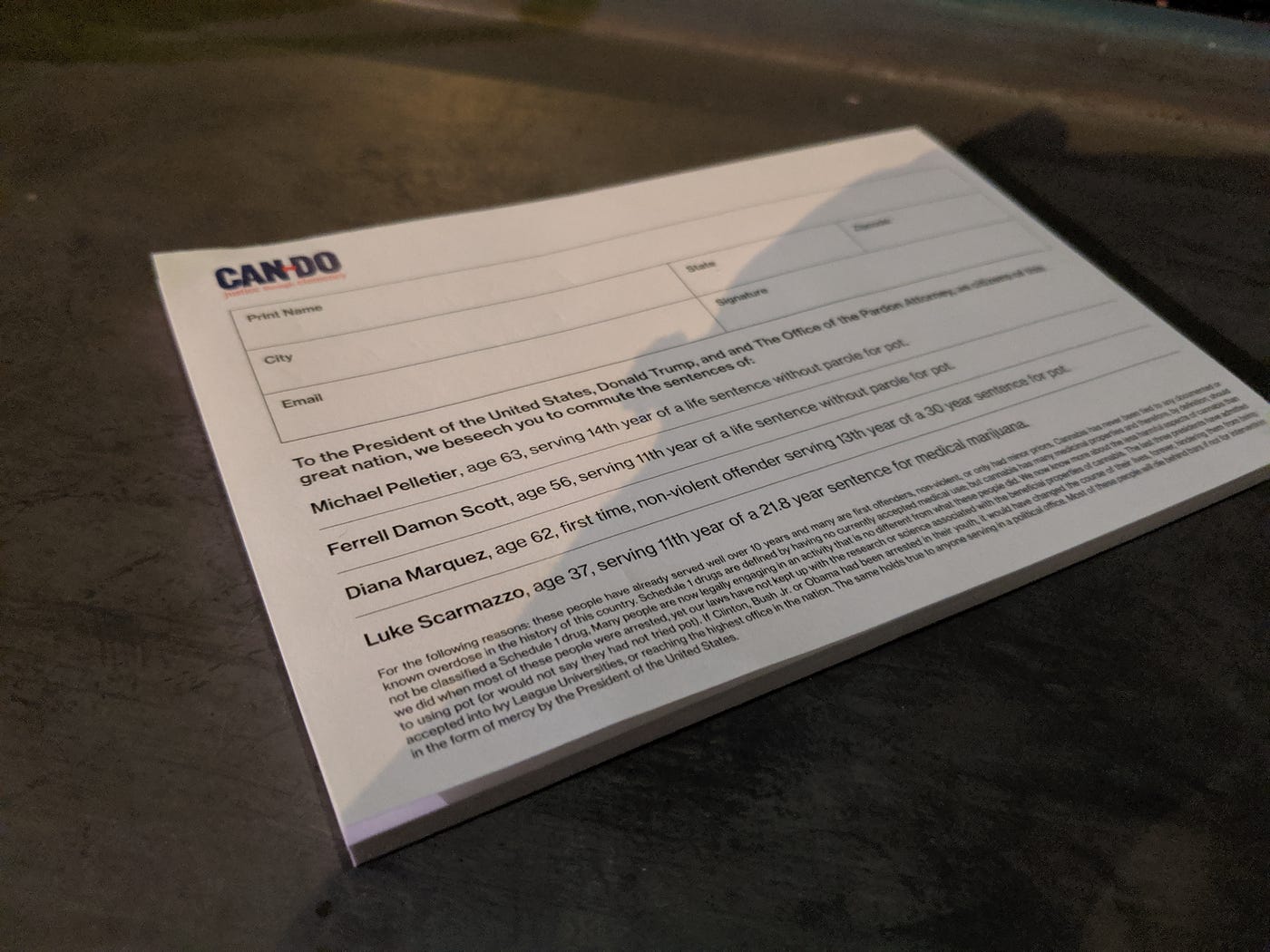
From the War on Drugs comes the rise of medical cannabis, which leads guests to a re-creation of the San Francisco Buyers’ Club lobby. This was the nation’s first public cannabis dispensary, founded by a group of activists and advocates in the early 90s.
The exhibit then pushes ahead in time to legalization, where interactive screens show how cannabis laws have changed over the last several years. You could spend some time here learning about that timeline, or you could meander into the final portion of the museum, The Plant Lab.
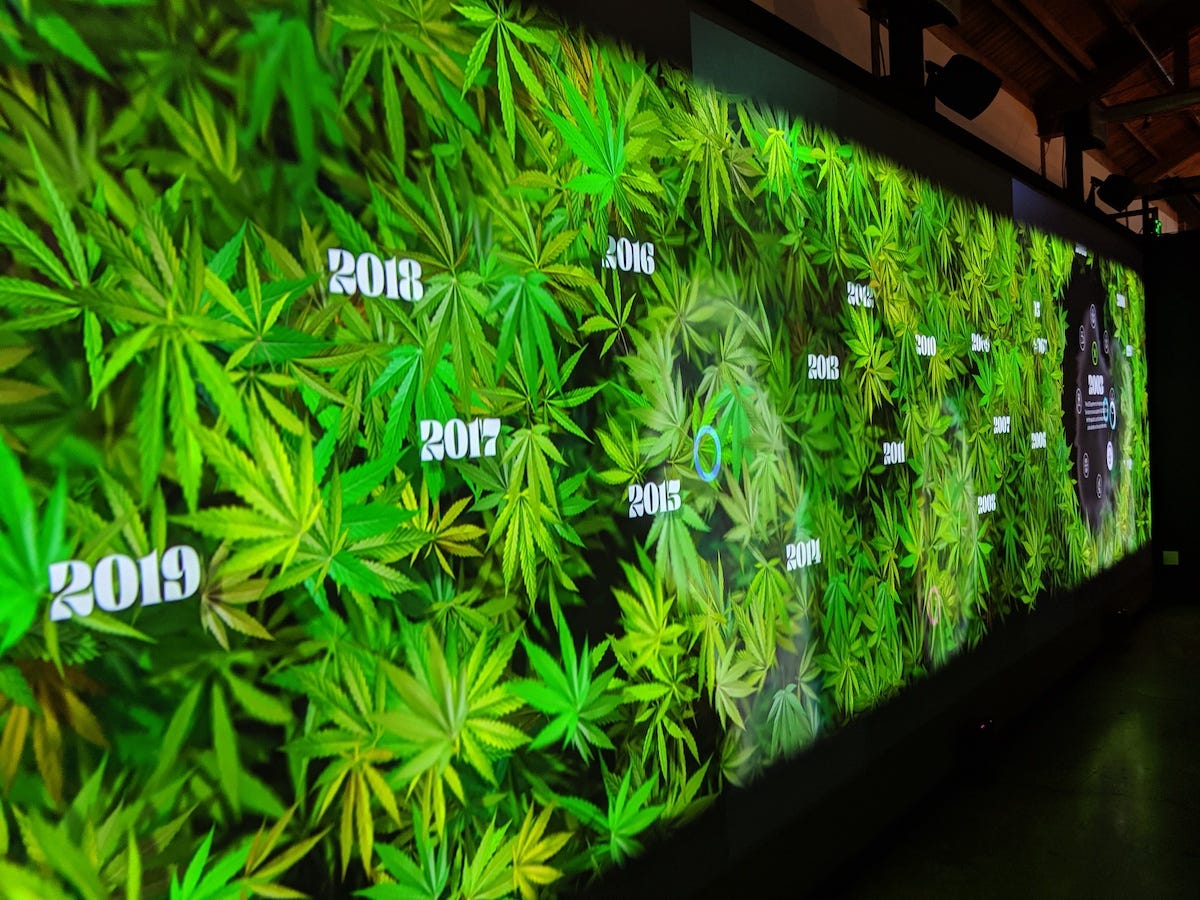
The Plant Lab will be especially useful to you if you’re wondering what the heck a terpene is or why your 420-prone friends are always talking about the entourage effect. Terpenes are oils that every plant contains; they’re what give lavender and basil their lovely scents. Various strains of cannabis also contain terpenes and you can smell your way through several of them in The Plant Lab. You can also learn about the plant’s effects on the body or the difference between THC and CBD. So while you can’t actually buy or consume cannabis here, you may be more informed the next time you visit your local dispensary. And if you aren’t looking to get into the so-called devil’s lettuce anytime soon, you’ll at least have learned its legal, then illegal, now kinda-legal history in the U.S.
It goes without saying, but: if you’re someone who doesn’t believe cannabis should be legal, this museum isn’t for you. But if you’re curious about the aforementioned topics, it’s a solid Instagram-friendly, info-heavy primer that a lot of thought clearly went into. It’s better than I thought it’d be, and it makes a clear effort to be more than a selfie palace. However tempting, you’re better off going in sober and taking the time to read the displays than getting super baked first.
Weedmaps Museum of Weed is open through September 29 at 720 N. Cahuenga Blvd. General admission is $35. 18+. Discounts are available for students, military, first responders, and groups of 15 or more. VIP tickets (21+ only) are $200.
NoPro is a labor of love made possible by our generous Patreon backers. Join them today!
In addition to the No Proscenium web site, our podcast, and our newsletters, you can find NoPro on Twitter, Facebook, YouTube, Instagram, in the Facebook community Everything Immersive, and on our Slack forum.
Office facilities provided by Thymele Arts, in Los Angeles, CA.

















Discussion